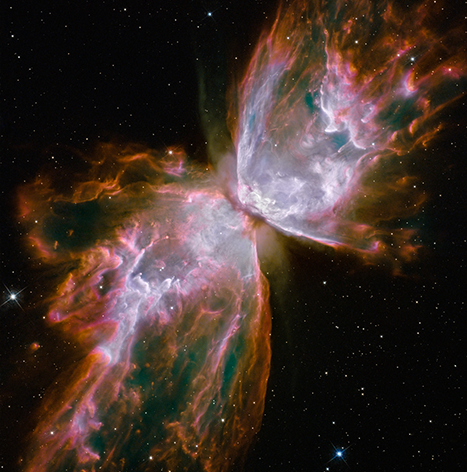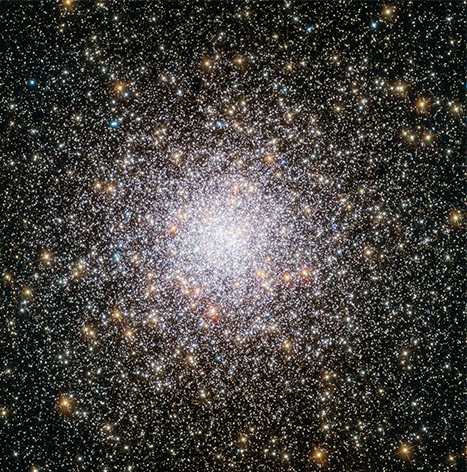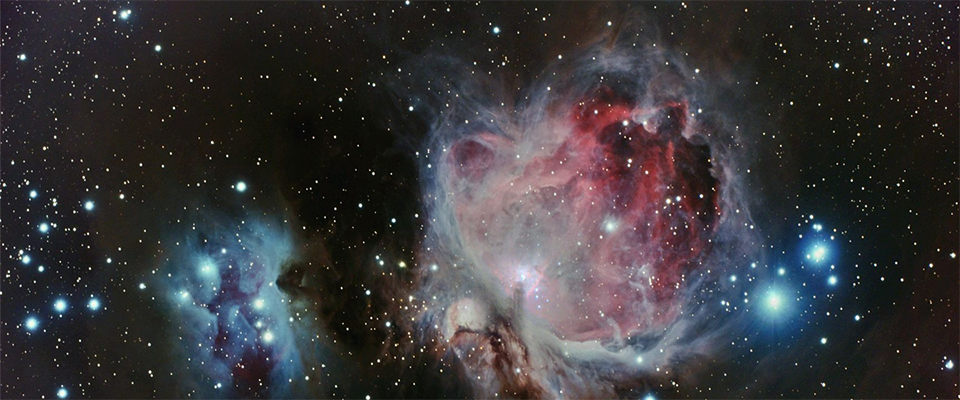High Resolution Astrophotography
|
Without the distorting effects of Earth's atmosphere, our 48 megapixel imager can take perfect high resolution images every time. We can reach the maximum theoretical resolution for our main mirror at 0.17 arc seconds per pixel on a single image. Contrast will be fantastic, with the blackness of background space not being washed out by Earth's atmosphere, clouds, moisture, city lights, etc.
Galaxies, nebulae, clusters, and everything else in the sky will also be brighter without the extinction caused by the atmosphere. The passive cooling afforded of our imaging chips in space to -50 degrees Celsius will give us an awesome signal to noise ratio, which means our image will contain more actual data and less grainy noise.
Most of the sky will be visible to our space telescope as it orbits the Earth. Only objects directly behind the sun or within a few degrees of it will not be visible. This means you can image objects found in the southern hemisphere's sky and take your next image of one in the northern hemisphere's sky. It also means you don't have to wait for the sun to set to see it. For example, you could shoot the small Magellanic cloud and then turn the spacecraft on the same orbit to image the galaxy M109 in the Big Dipper. Something that is impossible to do from earth.
In space, we can image and take data 24 hours a day. There is no need to wait for the sun to set. This also means we can stare at the same spot in the sky for days on end to get deep field images. When taking data, you don't need to take into account the changing background brightness of the atmosphere, the moon or atmospheric refraction.
All of this boils down to: If you are on your lunch break and decide you want to take a picture of the Trifid nebula, simply pull out your smartphone, open the SpaceFab app, select Trifid Nebula, frame how you want the nebula in your shot, choose color, choose the amount of time for exposure and click “go”!
Maybe you hear about some new astronomical event on the news, like the recent interstellar asteroid that just flew through our solar system or the merger of two neutron stars. Want to check it out and get your own data? Open the app and type the object name or its coordinates and SpaceFab will send you down the data within 24 hours.
Galaxies, nebulae, clusters, and everything else in the sky will also be brighter without the extinction caused by the atmosphere. The passive cooling afforded of our imaging chips in space to -50 degrees Celsius will give us an awesome signal to noise ratio, which means our image will contain more actual data and less grainy noise.
Most of the sky will be visible to our space telescope as it orbits the Earth. Only objects directly behind the sun or within a few degrees of it will not be visible. This means you can image objects found in the southern hemisphere's sky and take your next image of one in the northern hemisphere's sky. It also means you don't have to wait for the sun to set to see it. For example, you could shoot the small Magellanic cloud and then turn the spacecraft on the same orbit to image the galaxy M109 in the Big Dipper. Something that is impossible to do from earth.
In space, we can image and take data 24 hours a day. There is no need to wait for the sun to set. This also means we can stare at the same spot in the sky for days on end to get deep field images. When taking data, you don't need to take into account the changing background brightness of the atmosphere, the moon or atmospheric refraction.
All of this boils down to: If you are on your lunch break and decide you want to take a picture of the Trifid nebula, simply pull out your smartphone, open the SpaceFab app, select Trifid Nebula, frame how you want the nebula in your shot, choose color, choose the amount of time for exposure and click “go”!
Maybe you hear about some new astronomical event on the news, like the recent interstellar asteroid that just flew through our solar system or the merger of two neutron stars. Want to check it out and get your own data? Open the app and type the object name or its coordinates and SpaceFab will send you down the data within 24 hours.


